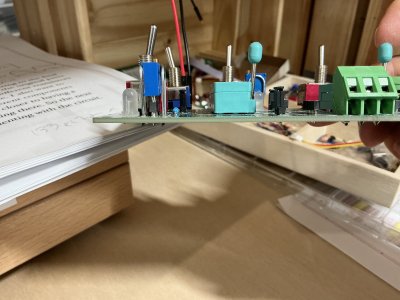huntingtonaudio
Newbie
- Messages
- 12
Here's a tool I designed to help you explore the classic Fuzz Face circuit. If you love fuzz this lil thing can help you design your own.

A little about it:
I've written a little more about it recently on reddit. And if you want to get a better sense of how it works you can try the guidebook PDF.
Here's the link to the kit:

A little about it:
- It can help you explore the original Fuzz Face circuit in a neat and organized way. Jumper wire spaghetti be damned. Use some tried and true part number/resistor value combinations (I'd start here: https://fuzzcentral.ssguitar.com/fuzzface.php) and poke and prod and measure this thing until you get a feel for the push and pull of this circuit.
- Once you've gotten a feel for it with the standard part numbers and values, you can use this board to quickly hunt for and dial in ideal calibrations for any BJT transistor part numbers in your collection. Dig out a pair of transistors, check the datasheet (unless you want to just cowboy the thing and shoot form the hip), and tweak away as you try to dial in your fuzz.
- If you're feeling adventurous you may be able to tap any of the 5 test points (otherwise intended for measuring current flow at certain points in the circuit) to expand the circuit design by adding your own modifying elements, stages, etc. at these junctures. That’s more of a hacking route, but hacking is certainly in the spirit of what we’re all doing here, I think.
I've written a little more about it recently on reddit. And if you want to get a better sense of how it works you can try the guidebook PDF.
Here's the link to the kit:

Fuzz Face Explorer Board Kit
The Fuzz Face Explorer Board is an unassembled learning board kit to help you explore the famous Fuzz Face circuit in a neat and organized way. Jumper wire spaghetti be damned. Use some tried and true part number/resistor value combinations and then poke, prod, and measure this thing until you...
huntingtonaudio.com




